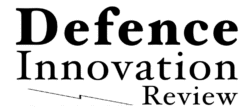The emergence of insect-enabled espionage is pushing the boundaries of intelligence, surveillance, and reconnaissance (ISR) operations, offering a glimpse into a future where tiny, unobtrusive machines could revolutionise covert surveillance. This rapidly evolving technology, which involves the use of real or robotic insects for intelligence gathering, presents both opportunities and challenges for the defence and security sectors.
Insects, whether natural or synthetic, possess unique advantages that traditional surveillance tools cannot match. Their small size, agility, and ability to access confined or hostile environments make them ideal for missions where drones and other conventional means fall short. This capability is particularly valuable in urban warfare, hostage rescue operations, and counterterrorism efforts, where stealth and precision are paramount.
One of the most intriguing aspects of this technology is the development of insect cyborgs—hybrid creatures that blend biological organisms with microelectronic systems. These cyborgs can be controlled remotely, allowing operators to navigate them into restricted areas and gather critical intelligence without detection. The potential for plausible deniability is a significant advantage, as the use of insect cyborgs could be difficult to trace back to a specific entity, adding a layer of ambiguity to intelligence operations.
However, the path to widespread operational adoption is fraught with technical challenges. The integration of microelectronics with biological systems is a complex process that requires advancements in materials science, robotics, and biotechnology. Additionally, the ethical and legal implications of deploying insect cyborgs in the field remain unresolved, raising questions about the boundaries of acceptable surveillance practices.
Despite these hurdles, the potential of insect-enabled espionage is undeniable. The technology could significantly enhance search and rescue (SAR) missions, allowing for the rapid deployment of tiny, agile units to locate and assist individuals in disaster zones or other inaccessible areas. The ability to gather real-time data from environments previously deemed unreachable could also provide a strategic edge in military and intelligence operations.
As the technology matures, it is likely to spark a new wave of innovation in the defence sector. The integration of insect cyborgs into existing ISR frameworks could lead to the development of more sophisticated and adaptable surveillance systems. Furthermore, the ethical and legal debates surrounding the use of such technology will shape future policies and regulations, ensuring that advancements in this field are aligned with broader societal values.
In conclusion, insect-enabled espionage represents a fascinating intersection of biology and technology, with the potential to redefine the landscape of intelligence gathering. While technical and ethical challenges remain, the promise of this technology is too significant to ignore. As researchers and defence experts continue to explore its capabilities, the world may soon witness a new era in covert surveillance, where the tiniest of allies play a crucial role in safeguarding national security.
